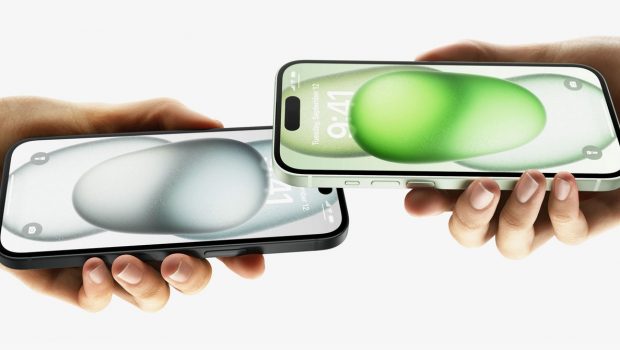You Don’t Need to Turn Off Apple’s NameDrop Feature in iOS 17
Apple’s NameDrop feature in iOS 17 is having a bit of a viral moment. Across the United States, police departments are warning adults to turn off the contact-sharing feature on their iPhones and their children’s devices. In addition, a widely shared TikTok video, with over 2 million views, describes how the feature lets strangers at the gym or on the bus steal all your information. The catch? It’s not true. You shouldn’t worry about NameDrop being some huge security risk.
First announced at the company’s developer conference in June, NameDrop is an extension of Apple’s AirDrop functionality. When NameDrop is turned on, two iPhone users can activate the feature by holding the top ends of their smartphones together. Then a contact card with your email and phone number may pop up on your own device. After that, you can tap Share or Receive Only. If you choose to share your contact information, it will be sent to the other device. End the transaction by tapping Done in the top left corner of your screen.
Contact sharing will be canceled if the two smartphones are moved apart anytime during the process or if you decide to lock your iPhone using the power button. Even though NameDrop is auto-enabled when you update to iOS 17, it’s crucial to note that consent is required throughout the process. Some random person on the street can’t just bump into you for a few seconds, and then walk away with your phone number.
Still want to turn off the NameDrop feature for your iPhone? Start by opening your Settings, then tap General and AirDrop. Go to the section labeled Start Sharing By and toggle Bringing Devices Together to the left. On this page, you can also change the settings for who can AirDrop information to your phone.
The iPhone isn’t the only Apple product that can use NameDrop. If you own a newer Apple Watch, you can receive the contact info from iPhones as well as other Apple Watches. To instigate a watch-to-watch transfer, you’ll need to open Contacts and tap on your image. Choose Share and hold your watches close together. (Holding hands is not required to complete the NameDrop.) Voluntarily follow the same steps listed above to share your info.
Apple calls the image that pops up during a NameDrop your Contact Poster. It’s not just for NameDrops; the Contact Poster lets you control what appears when a text or call lands on a friend’s or family member’s phone. It’s highly customizable, with a range of color choices, and the option to display a selfie, memoji, or just your name. Check out this guide for in-depth tips to personalize it.
Even though you shouldn’t worry very much about the NameDrop feature on your iPhone, it’s important to be aware of how your smartphone can leak personal data. A good place to start is by checking to see whether you’re sharing location data in a way you don’t actually intend to. Another basic step to keep your iPhone secure is to update the software as soon as the new option becomes available, so Apple can patch potential exploits.








Gloss